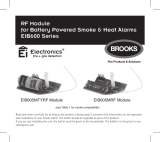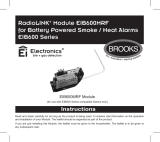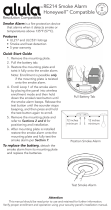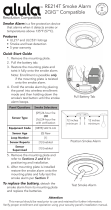
Locations to avoid
DON’T place Smoke Alarms in any of the following areas:
• Bathrooms, kitchens, shower rooms, garages or other rooms where the smoke
alarm may be triggered by steam, condensation, normal smoke or fumes. Keep
at least 6 metres away from sources of normal smoke/fumes.
• Locate away from very dusty or dirty areas as dust build-up in the chamber can impair
performance. It can also block the insect screen mesh and prevent smoke from
entering the smoke detector chamber.
• Do not locate in insect infested areas. Small insects getting into the smoke
detector chamber can cause intermittent alarms.
• Places where the normal temperature can exceed 40°C or be below -10°C (e.g.
attics, furnace rooms, directly above ovens or kettles etc.) as the heat/steam
could cause nuisance alarms.
• Near a decorative object, door, light fitting, window moulding etc., that may
prevent smoke or heat from entering the Alarm.
• Surfaces that are normally warmer or colder than the rest of the room (e.g. attic
hatches). Temperature differences might stop smoke or heat from reaching the
alarm.
• Next to or directly above heaters or air conditioning vents, windows, wall vents etc.
that can change the direction of airflow.
• In very high or awkward areas (e.g. over stairwells) where it may be difficult to
reach the Alarm (for testing & hushing).
• Locate the Alarm at least 1m from dimmer controlled lights and wiring as some
dimmers can cause interference.
11
































